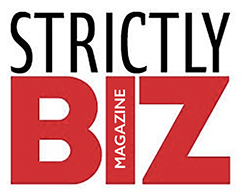STRICTLY BIZ MAGAZINE JUNE 2021
EFFECTIVE CAMPAIGN RESPONSE MECHANISMS REALLY MATTERS?
Developing, brainstorming, planning, and delivering campaigns is a time-consuming and challenging task, but it is rewarding. However, the response method used to execute the campaign is crucial for any campaign to succeed, as marketing campaigns may not conclude with successful execution. As a consequence, it must be assessed in terms of the response received. Campaign response mechanisms can be considered as the campaign's last 'call to the action part. A response mechanism is a call to action that encourages a prospect to make a transaction. Consumers are more at ease with a response mechanism since it provides additional time for thinking and eliminates sales pressure.
When conducting a digital media campaign, it is vital to evaluate response mechanisms. Being too specific may limit reaction, while being too broad may result in the wrong response forms. In their creative and messaging, marketers must emphasize the response patterns or customer journeys that are most conducive to the campaign's overall success. Policies for response mechanisms should be stated across campaigns to ensure the correct strategy is utilized for all campaigns, as response mechanisms differ by product type. For instance, companies in the financial sector, such as insurance companies, require visitors to browse the site to purchase online products and services.
When marketers are implementing a campaign, they have a variety of response mechanism options. There are four primary response channels for campaign media from the creative such as a display ad, pay-per-click ad, or rented e-mail newsletter: home page, microsite or landing page, personal (chat or call back), and offline. The first option is the home page, which is usually a waste of investment in online media if visitors are sent from the media site to the destination website's main page. Typically, it appeals to a broad range of people, and by providing an excessive amount of choice, it fails to properly reinforce the message of the online creative or convert to additional action. For instance, visitors are urged to visit if a buyer is sent to a retailer's or manufacturer's brand's website.
The microsite or landing page is a second effective campaign response method that marketers can deploy. A targeted landing page or microsite can more successfully convert visitors to action, assisting in achieving a return on the online campaign budget. For instance, the landing page will display a variety of response mechanisms, albeit offline will be excluded. Additionally, marketers can leverage the microsite's URL strategy, which makes the page easier to designate in offline creative. This determines how various categories of material on a website will be organized into distinct folders or directories.
Additionally, this can aid with search engine optimization. For instance, when users browse the eTiQa website (www.etiqa.com.my), they notice how the web address details change as they navigate between sections such as Products or Claims. For example, on a website, a destination page is labeled as www.company.com/products/insurance/car-insurance.
Personal chat or call-back is the third effective marketing response strategy. In this example, the creative or landing page encourages campaign respondents to "chat" directly with a live operator. It is frequently referred to as a call-back service and combines web and phone functionality. Buttons or hyperlinks direct visitors to request a call-back from a telephone operator or engage in an online conversation. The advantage of this technique is that it increases customer engagement and, as a result, often results in a greater conversion-to-sale rate. For instance, an insurance business may use this technique to offer their product to new clients by adding a hyperlink in advertisements that directs interested consumers to fill out their information. In addition, the insurance company will provide a call-back option. This feature enables consumers to be contacted at a later time set by the client.
Finally, the effective campaign response mechanism is offline. Offline response mechanisms should not be abandoned unless the management costs are unjustifiable, which is infrequently the case. Incorporating the appropriate response mechanism for offline media elements of campaigns such as television advertisements, print advertisements, or direct mail pieces is critical. Permission-based web response models are widely employed in direct marketing. For instance, this procedure could begin with a direct mail campaign or an offline advertisement. The website serves as the mechanism for direct response, which is termed as 'web response'.
u

